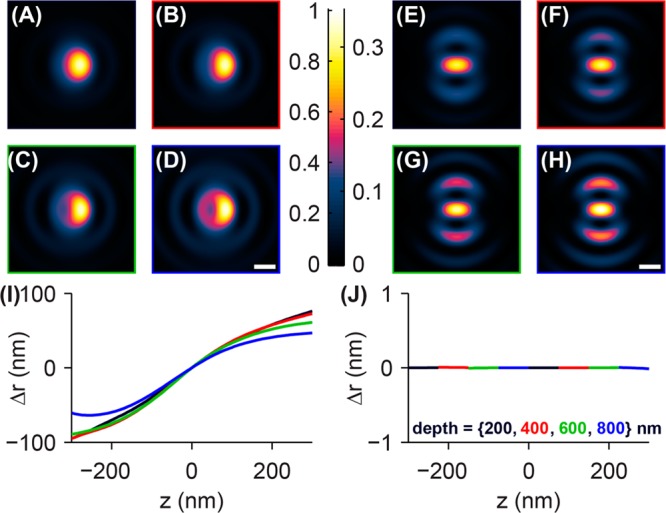Figure 4.

Effect of refractive index mismatch on images and localization error of single-molecule dipole emitters at various depths. Images of a fixed single molecule (Θ = 45°) immersed in water (n2 = 1.333) at depths of (A) 200 nm, (B) 400 nm, (C) 600 nm, and (D) 800 nm from the coverglass–water interface are shown for the clear aperture microscope with an oil-immersion objective lens (n1 = 1.518); the objective lens position is 200 nm above the position of best focus. Images of emitters at corresponding depths are shown for the azimuthally polarized microscope in E–H. The azimuthally polarized images are plotted in intensity units relative to those of the clear-aperture images. Scale bars = 200 nm. (I) Fitting the images to a 2D elliptical Gaussian function yields measurements of the localization error in the clear-aperture microscope as a function of emitter depth (black = 200 nm, red = 400 nm, green = 600 nm, and blue = 800 nm) and objective lens defocus z. The localization error worsens for increasing defocus z and decreasing emitter depth. (J) The microscope with an azimuthal polarizer exhibits no localization error for a large range of depths and defocus amounts, demonstrating that it is robust to index mismatch aberrations common during biological imaging.
